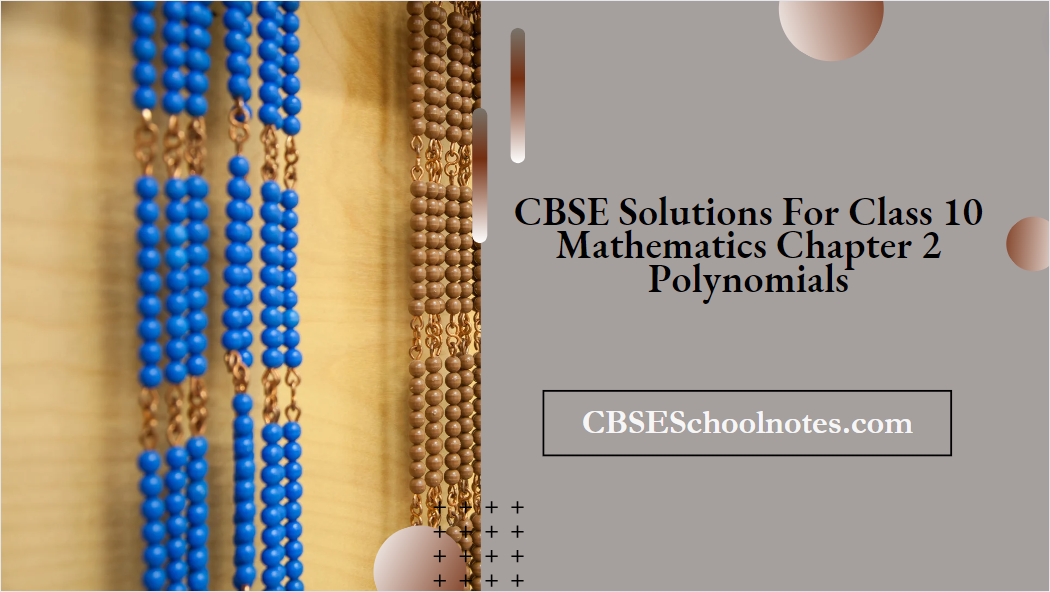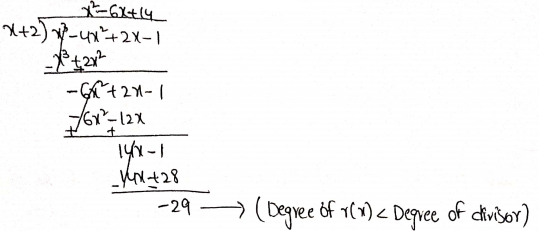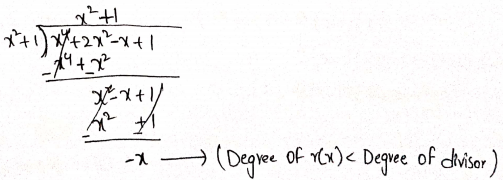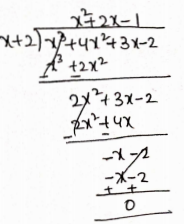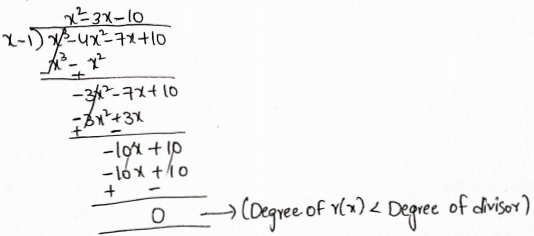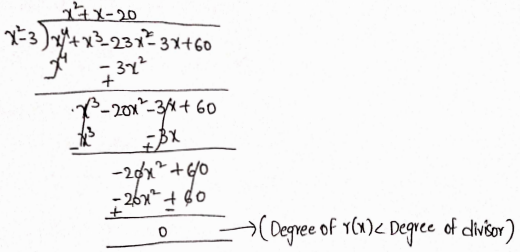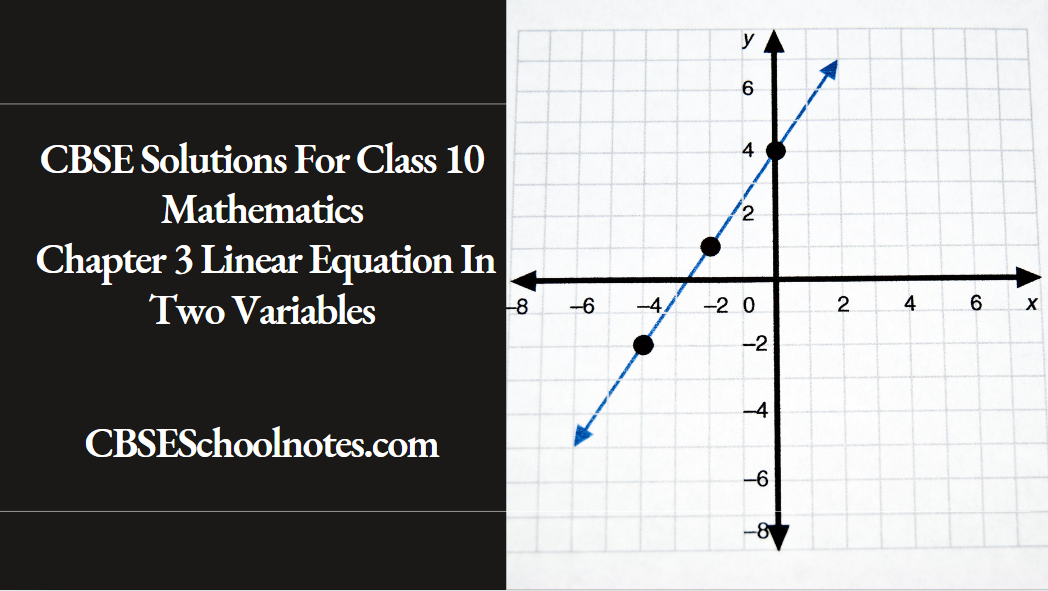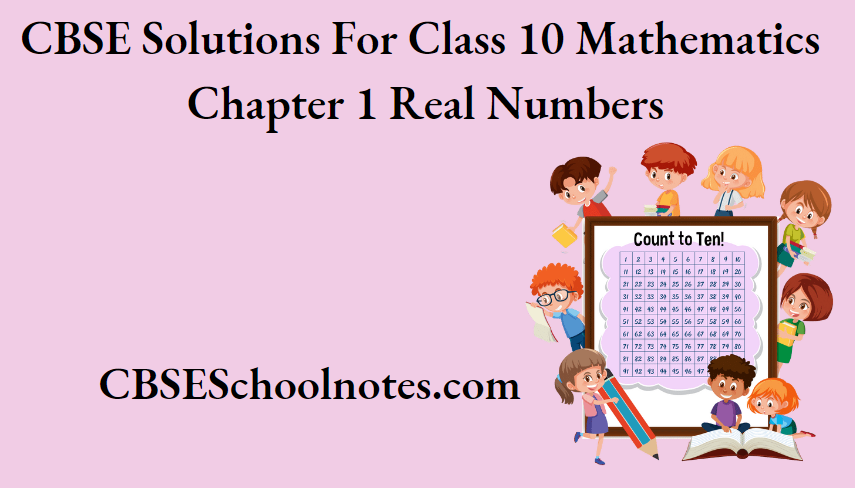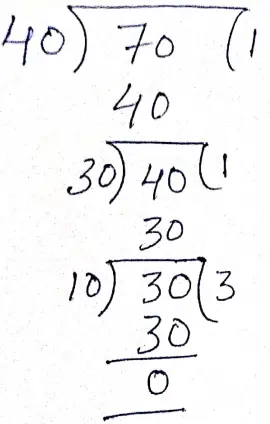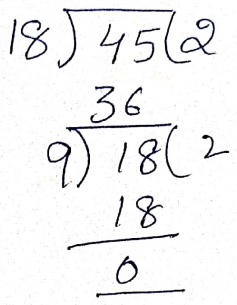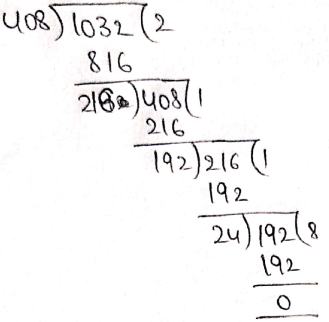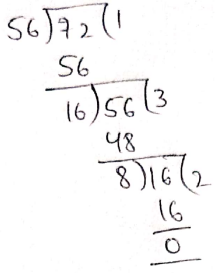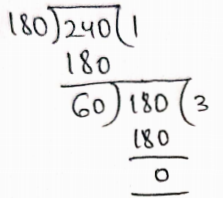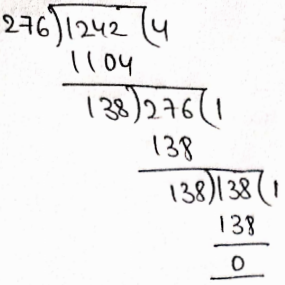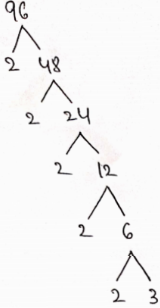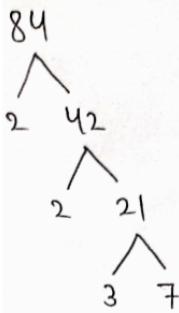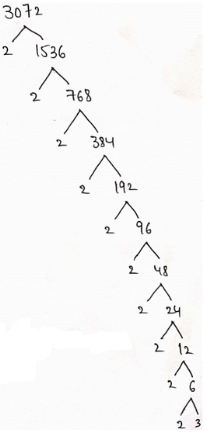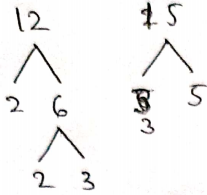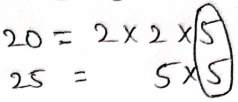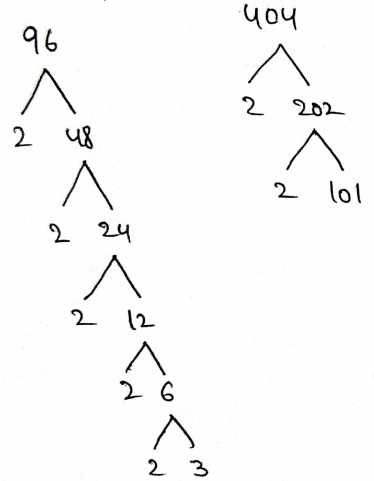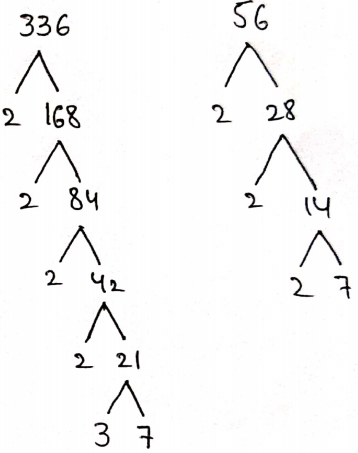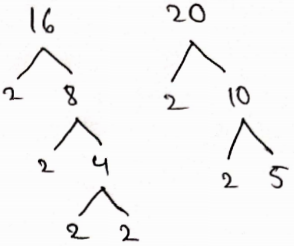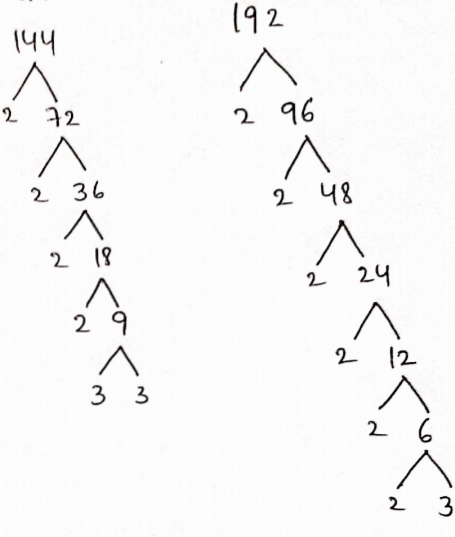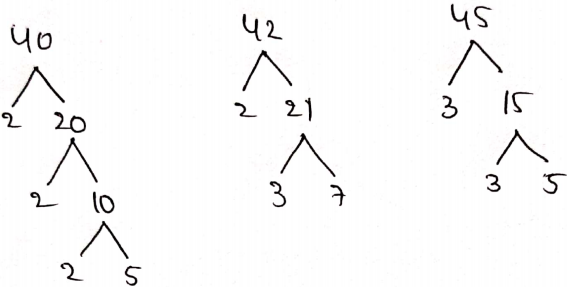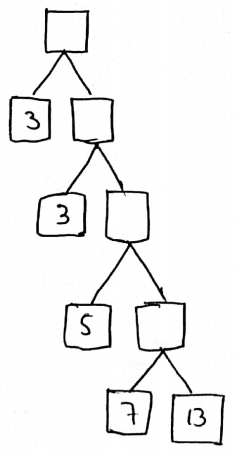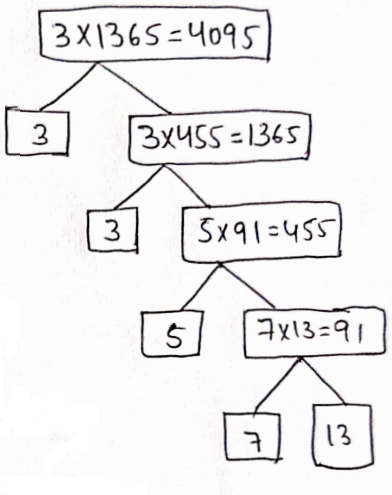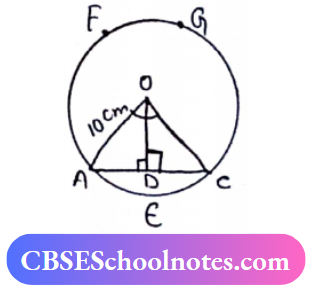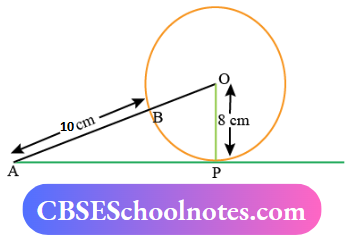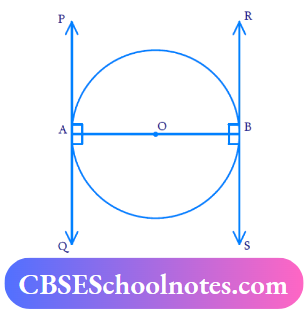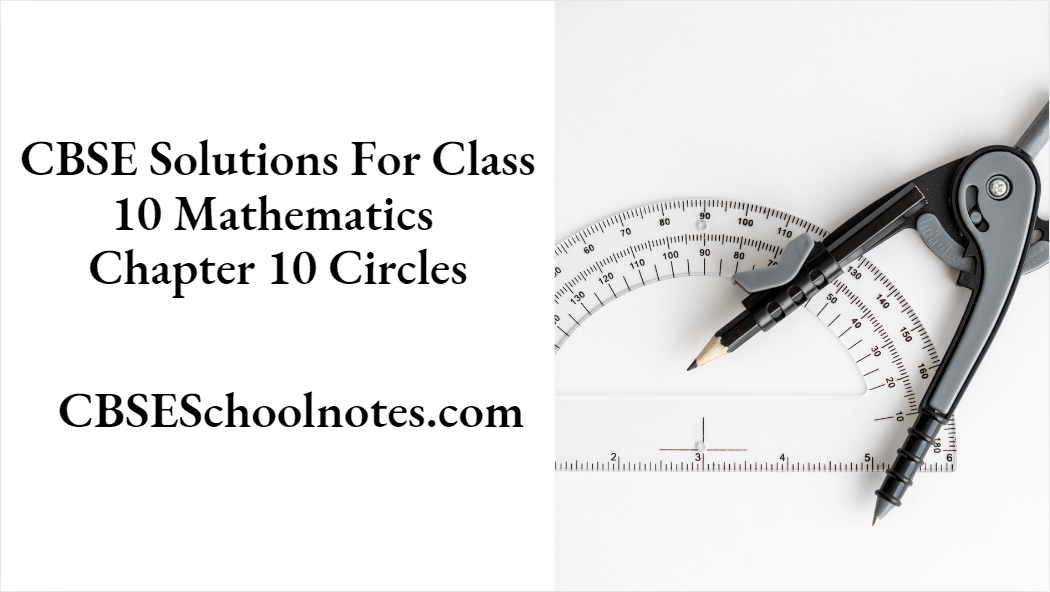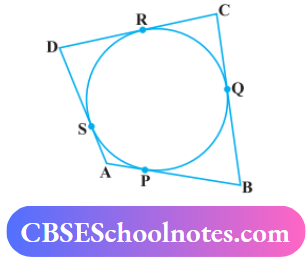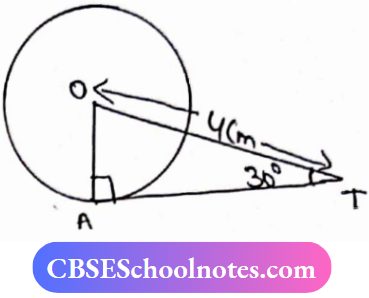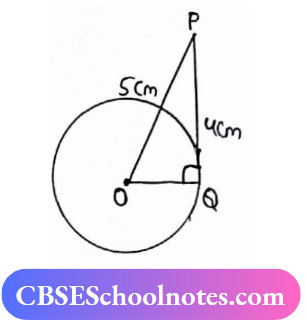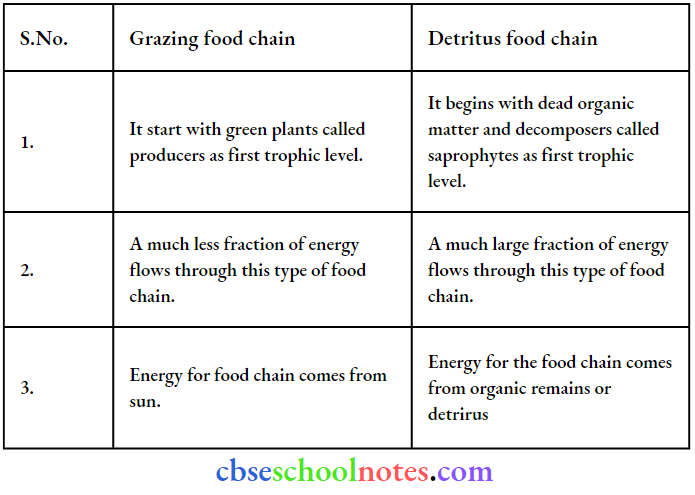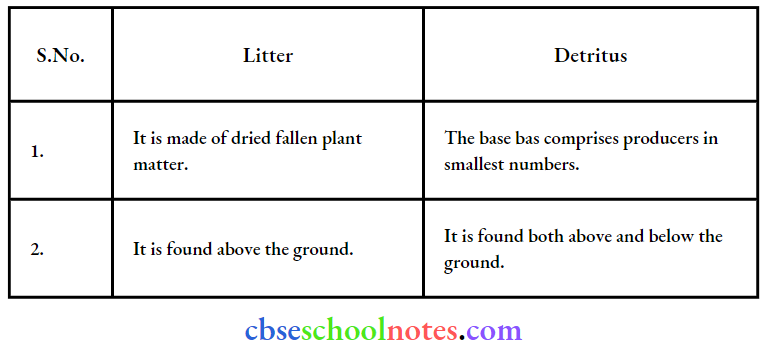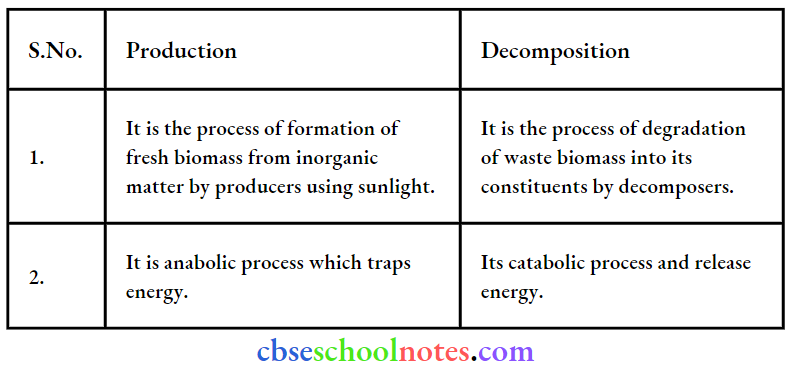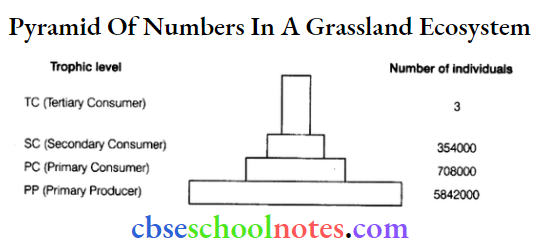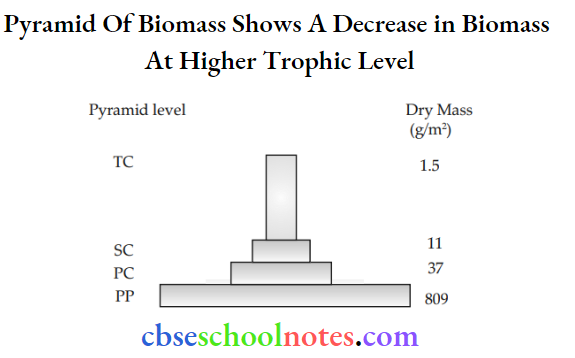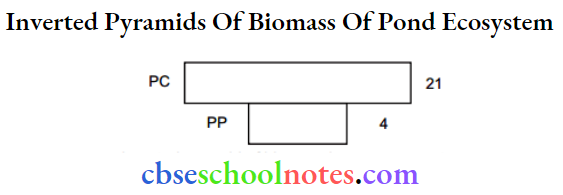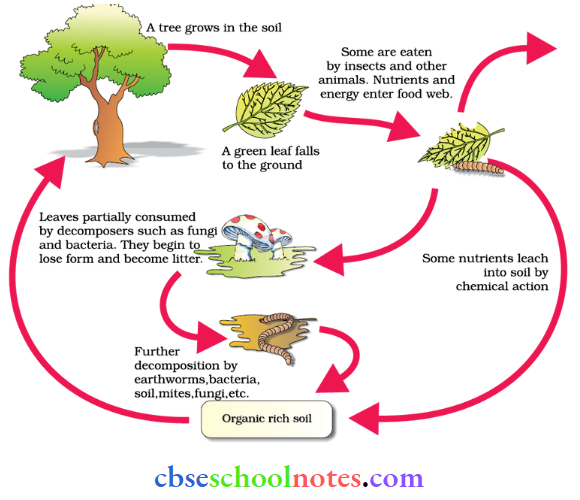CBSE Solutions For Class 10 Mathematics Chapter 7 Co-ordinate Geometry
Question 1. Find the distance between the following points.
1. A(-6,4) and B(2,-2)
Solution:
Distance between the points (-6,4) and (2,-2)
⇒ \(\sqrt{\left(x_2-x_1\right)^2+\left(y_2-y_1\right)^2} \)
⇒ \(\sqrt{(2+6)^2+(-2-4)^2}\)
⇒ \(\sqrt{(8)^2+(-6)^2}\)
⇒ \(\sqrt{64+36}\)
⇒ \(\sqrt{100}\)
10 Units
2.A(-5,-1) and B (0,4)
Solution:
Distance between the points (-5,-1) and (0,4)
⇒ \(\sqrt{\left(x_2-x_1\right)^2+\left(y_2-y_1\right)^2}\)
⇒ \(\sqrt{(0+5)^2+(4+1)^2}\)
⇒ \(\sqrt{(5)^2+(5)^2}\)
⇒ \(\sqrt{25+25}\)
⇒ \(\sqrt{50}\)
⇒ \(\sqrt{25 \times 2} \Rightarrow 5 \sqrt{2} \text { units }\)
Read and Learn More Class 10 Maths

3. A(-4,-1) and B(7,3)
Solution:
Distance between the points (-4,-1) and (7,3)
⇒ \(\sqrt{\left(x_2-x_1\right)^2+\left(y_2-y_1\right)^2}\)
⇒ \(\sqrt{(7-4)^2+(3+1)^2}\)
⇒ \(\sqrt{(3)^2+(4)^2}\)
⇒ \(\sqrt{9+16}\)
⇒ \(\sqrt{25}\)
5 Units
4. A(3,4) And B(5,2)
Solution:
Distance between the points (3,4) And (5,2)
⇒ \(\sqrt{\left(x_2-x_1\right)^2+\left(y_2-y_1\right)^2}\)
⇒ \(\sqrt{(5-3)^2+(2-4)^2}\)
⇒ \(\sqrt{(2)^2+(-2)^2}\)
⇒ \(\sqrt{4+4}\)
⇒ \(\sqrt{8}\)
⇒ \(\sqrt{4 \times 2} \Rightarrow 2 \sqrt{2} \text { units }\)
Question 2. Find the Distance of the following points from the origin:
1. (3,-4)
Solution:
Distance between the points (3,-4) And (0,0)
⇒ \(\sqrt{\left(x_2-x_1\right)^2+\left(y_2-y_1\right)^2}\)
⇒ \(\sqrt{(0-3)^2+(0+4)^2}\)
⇒ \(\sqrt{(-3)^2+(4)^2}\)
⇒ \(\sqrt{9+16}\)
⇒ \(\sqrt{25}\)
5 Units
2. (-8,6)
Solution:
Distance between the points (-8,6) And (0,0)
⇒ \(\sqrt{\left(x_2-x_1\right)^2+\left(y_2-y_1\right)^2}\)
⇒ \(\sqrt{(0+8)^2+(0+6)^2}\)
⇒ \(\sqrt{(8)^2+(6)^2}\)
⇒ \(\sqrt{64+36}\)
⇒ \(\sqrt{100}\)
10 Units
Question 3. Find the Distance Between the points (a,b) and (-b, a)
Solution:
Distance between the points (-b, a) and (a,b)
⇒ \(\sqrt{\left(x_2-x_1\right)^2+\left(y_2-y_1\right)^2}\)
⇒ \(\sqrt{(a+b)^2+(b-a)^2}\)
⇒ \(\sqrt{a^2+b^2+2 a b+b^2+a^2-2 a b}\)
⇒ \(\sqrt{2 a^2+2 b^2}\)
⇒ \(\sqrt{2\left(a^2+b^2\right)} \text { units }\)
Question 4. Find the Distance Between the points (2a,3a) and (6a,6a)
Solution:
Distance Between the points (2a,3a) and (6a,6a)
⇒ \(\sqrt{\left(x_2-x_1\right)^2+\left(y_2-y_1\right)^2}\)
⇒ \(\sqrt{(6 a-2 a)^2+(6 a-3 a)^2}\)
⇒ \(\sqrt{(4 a)^2+(3 a)^2}\)
⇒ \(\sqrt{16 a^2+9 a^2}\)
⇒ \(\sqrt{25 a^2}\)
5a Units
Question 5. Find the Distance Between the points (a,-b)
Solution:
Distance Between the points (a,-b) and (0,0)
⇒ \(\sqrt{\left(x_2-x_1\right)^2+\left(y_2-y_1\right)^2}\)
⇒ \(\sqrt{(0-a)^2+(0+b)^2}\)
⇒ \(\sqrt{a^2+b^2} \text { units }\)
Question 6. Find the Distance Between the points (6,0) and (0,y) is 10 units, and find the value of y.
Solution:
⇒ \(\sqrt{\left(x_2-x_1\right)^2+\left(y_2-y_1\right)^2}\)
⇒ \(\sqrt{(0-6)^2+(y-0)^2}\)
⇒ \(\sqrt{(6)^2+(y)^2}\)
⇒ \(\sqrt{36+y^2}\)
Given that,
⇒ \(\sqrt{36+y^2}\)
y2+36 = 100
y2= 100-36
y2 = 64
y = √64
⇒ \(y= \pm 8\)
Question 7. Find the Distance Between the points (3,x) and (-2,-6) is 13 units, and find the value of x.
Solution:
Distance Between the points (-2,-6) and (3,x)
⇒ \(\sqrt{\left(x_2-x_1\right)^2+\left(y_2-y_1\right)^2}\)
⇒ \(\sqrt{(3+2)^2+(x+6)^2} \Rightarrow \sqrt{(5)^2+x^2+36+12 x}\)
⇒ \(\sqrt{25+x^2+36+12 x}\)
⇒ \(\sqrt{x^2+|2 x+61}\)
Given that,
⇒ \(\sqrt{x^2+|2 x+61}\) = 13
⇒ \({x^2+|2 x+61}\)= 169
x2+12x+61-169=0
x2+12x+108=0
x2-6x+18x-108=0
x(x-6)(x+18)
(x-6)(x+18)=0
x-6=0 or x+18=0
x=6 or x= -18
Question 8. Prove that the following points are the vertices of a right-angled triangle:
1. A(-2,2) B(13,11) and C(10,14)
Solution:
Let the points are A(-2,2) B(13,11) and C(10,14)
AB2 = (13+2)2+(11-2)2
= (15)2+(9)2
= 225+81=306
BC2 = (10-13)2 + (14-11)2
= (3)2 +(3)2
= 9+9=18
CA2 = (10+2)2+(14-2)2
=(12)2+(12)2
=144+144=283
Therefore, AB = BC2+CA2
306=18+288
306=306
and AB2 = BC2+ CA2
ΔABC is a right-angled triangle.
2. A(-1,-6), B(-9,10), ((-7, ()
Solution:
let the points are A(-1,-6), B(-9-10) and C(-7,6)
AB2 = (9+1)2 + (-10+6)2
= (-8)2 + (-4) 2
= 64+16= 80
Bc2= (-7+9)2 + (6+10)2
= (2) 4 (16) 2
= 4+256=260
AC2= (-7+1)2 + (6+6)2
= (-6)2+(12)2
=36+144 = 180
Therefore 260=80+180
and, BC2= AB2 +AC2
ΔABC is a right-angled triangle.
Question 9. Prove that the following points are the Vertices of an Isosceles right-angled triangle:
1. A(-8-9), B(0-3) and C(-6,5)
Solution: Let the points are A(-8-9), B(0,-3) and c(-6,5)
AB2 = (0+8) + (-3+9) 2
= (8)2+(6)2
= 64+36=100
BC2 = (6=0)2 + (5+3)2
= (-6)2 +(8)2
= 36 +64 = 100
(A2= (6+8)2 + (5+9)2
= (2)2 + (14)2
= 4+196=200
Therefore, AB = BC = √100
and AC2 = AB2+BC2
ΔABC is an isosceles right-angled triangle.
2. A (9-3), B(2,-1) and c(-2,-1)
Solution:
Let the points are A(9-3), B(2,-1) and c(-2,-1)
AB2 = (2-0)2 + (-1+3)2
=(2)2+(2)2
=4+4=8
BC2 = (-2-2)2 +(-1+1)2
(-4)2=16
Ac2 = (2-0)2 + (-1+3)2
= (-2)2 + (2)2
=4+4=8
Therefore, AB=AC=√5
and BC2 = AB2 + AC2
AABC is an isosceles right-angled triangle.
Question 10. Prove that the points A(1,1), B(-1,-1) and C(√3,-√3) are the vertices of an equilateral triangle.
Solution:
Let the points are A(1, 1), B(-1,-1) and C(√3-√3)
⇒ \(AB=\sqrt{(-1-1)^2+(-1-1)^2}\)
⇒ \(AB=\sqrt{(-2)^2+(-2)^2}\)
\(AB=\sqrt{4+4}=\sqrt{8}=2 \sqrt{2}\)
⇒ \(BC=\sqrt{(\sqrt{3}+1)^2+(-\sqrt{3}+1)^2}\)
⇒ \(BC=\sqrt{3+1+2 \sqrt{3}+3+3-2 \sqrt{3}}\)
⇒ \(CA=\sqrt{(\sqrt{3}-1)^2+(-\sqrt{3}-1)^2}\)
⇒ \(CA=\sqrt{3+1-2 \sqrt{3}+3+1+2 \sqrt{3}}\)
⇒ \(CA=\sqrt{8}=2 \sqrt{2}\)
AB=BC=CA
Question 11. Prove that the points (-1,-2), (-2,-5), (-4-6), and (-3,-3) are the vertices of a Parallelogram.
Solution:
Let the points are A(-1,-2), B(-2,-5), c(-4,-6) and D(-3,-3)
⇒ \(AB=\sqrt{(-2+1)^2+(-5+2)^2}\)
⇒ \(AB=\sqrt{(-1)^2+(-3)^2}\)
⇒ \(AB=\sqrt{1+9}=\sqrt{10}\)
⇒ \(BC=\sqrt{(-4+2)^2+(-6+5)^2}\)
⇒ \(BC=\sqrt{(-2)^2+(-1)^2}\)
⇒ \(BC=\sqrt{4+1}=\sqrt{5} \)
⇒ \(CD=\sqrt{(-3+4)^2+(-3+6)^2}\)
⇒ \(CD=\sqrt{(1)^2+(3)^2}\)
⇒ \(CD=\sqrt{1+9}\)
⇒ \(CD=\sqrt{10}\)
⇒ \(AD=\sqrt{(-3+1)^2+(-3+2)^2}\)
⇒ \(AD=\sqrt{(-2)^2+(-1)^2}\)
⇒ \(AD=\sqrt{4+1}=\sqrt{5}\)
Therefore, AB = CD = √TO
BC = AD = √5
☐ ABCD is a parallelogram
Question 12. prove that the points (-4,-3), (3,2), (2,3) and (1,-2) are the vertices of a rhombus.
Solution:
let the points are ·A(-4,-3), B(-3,2), C(2,3) and (1,-2)
⇒ \(A B=\sqrt{(-3+4)^2+(2+3)^2}\)
⇒ \(A B=\sqrt{(1)^2+(5)^2}=\sqrt{1+25}=\sqrt{26}\)
⇒ \(B C=\sqrt{(2+3)^2+(3-2)^2}\)
⇒ \(B C=\sqrt{(5)^2+(1)^2}=\sqrt{25+1}=\sqrt{26}\)
⇒ \(C D=\sqrt{(1-2)^2+(-2-3)^2}\)
⇒ \(C D=\sqrt{(-1)^2+(-5)^2}=\sqrt{1+25}=\sqrt{26}\)
⇒ \(D A=\sqrt{(1+4)^2+(-2+3)^2}\)
⇒ \(D A=\sqrt{(5)^2+(1)^2}=\sqrt{25+1}=\sqrt{26}\)
⇒ \(A C=\sqrt{(2+4)^2+(3+3)^2}\)
⇒ \(A C=\sqrt{(6)^2+(9)^2}=\sqrt{36+81}=\sqrt{117}\)
⇒ \(B D=\sqrt{(1+3)^2+(-2-2)^2}\)
⇒ \(B D=\sqrt{(4)^2+(-4)^2}=\sqrt{16+16}=\sqrt{32}\)
Therefore, AB = BC= CD = DA = √26
AC and BD
〈〉 ABCD is a rhombus.
Question 13. Show that the following points are the vertices of a rectangle:
1. A(4,2), B(0,-4), c(-3,-2), D(14)
Solution.
Let the points are A (4,2), B(0,-4), C(-3,-2) and D(1,4)
⇒ \(A B=\sqrt{(0-4)^2+(-4-2)^2} \)
⇒ \(A B=\sqrt{(-4)^2+(-6)^2}=\sqrt{16+36}=\sqrt{52}\)
⇒ \(B C=\sqrt{(-3-0)^2+(-2+4)^2}\)
⇒ \(B C=\sqrt{(-3)^2+(-2)^2}=\sqrt{9+36} \sqrt{9+4}=\sqrt{13}\)
⇒ \(C D=\sqrt{(-3+1)^2+(4+2)^2}\)
⇒ \(C D=\sqrt{(-4)^2+(6)^2}=\sqrt{18+36}=\sqrt{52}\)
⇒ \(A D=\sqrt{(1-4)^2+(4-2)^2}\)
⇒ \(A D=\sqrt{(-3)^2+(2)^2}=\sqrt{9+4}=\sqrt{13}\)
Therefore, AB = CD=√52
BC=AD = √13
☐ ABCD is a rectangle
2. A(1,-1), B(2, 2), C(4,8), D(7,5)
Solution:
Let the points are A(1,-1), B(-2,2), c(4,8) and D(7,5)
⇒ \(A B=\sqrt{(-2-1)^2+(2+1)^2}\)
⇒ \(A B=\sqrt{(-3)^2+(3)^2}=\sqrt{9+9}=\sqrt{18}\)
⇒ \(B C=\sqrt{(4+2)^2+(8-2)^2}\)
⇒ \(B C=\sqrt{(6)^2+(6)^2}=\sqrt{36+36}=\sqrt{72}\)
⇒ \(C D=\sqrt{(7-4)^2+(5-8)^2}\)
⇒ \(C D=\sqrt{(3)^2+(3)^2}=\sqrt{9+9}=\sqrt{18}\)
⇒ \(A D=\sqrt{(7-1)^2+(5+1)^2}\)
⇒ \(A D=\sqrt{(6)^2+(6)^2}=\sqrt{36+36}=\sqrt{72}\)
Therefore, AB = CD= √18
BC=AD = √72
☐ ABCD is a rectangle
Question 14. Show that the points A(2,1),B(0,3), C(-2,1) and D(0,-1) are the Vertices of a Square.
Solution:
Let the points are A(2,1), B(0,3), C(-2, 1) and D(0,-1)
⇒ \(A B=\sqrt{(3-2)^2+(3-1)^2}\)
⇒ \(A B=\sqrt{(-2)^2+(2)^2}=\sqrt{4+4}=\sqrt{8}\)
⇒ \(B C=\sqrt{(-2-0)^2+(1-3)^2}\)
⇒ \(B C=\sqrt{(-2)^2+(-2)^2}=\sqrt{4+4}=\sqrt{8}\)
⇒ \(C D=\sqrt{(2)^2+(-2)^2}=\sqrt{4+4}=\sqrt{8}\)
⇒ \(A D=\sqrt{(0-2)^2+(-1-1)^2}\)
⇒ \(A D=\sqrt{(-2)^2+(-2)^2}=\sqrt{4+4}=\sqrt{8}\)
⇒ \(A C=\sqrt{(-2-2)^2+(1-1)^2}\)
⇒ \(A C=\sqrt{(-4)^2}=\sqrt{16}=4\)
⇒ \(B D=\sqrt{(0-0)^2+(-1-3)^2}\)
⇒ \(B D=\sqrt{(-4)^2}=\sqrt{16}=4\)
Therefore, AB = BC= CD=AD=√8
AC=BD=4
☐ ABCD is a Square
Question 15. Show that the points (1,1), (2,3) and (5,9) are collinear.
Solution:
⇒ \(A B=\sqrt{(2-1)^2+(3-1)^2}\)
⇒ \(A B=\sqrt{(1)^2+(2)^2}=\sqrt{1+4}=\sqrt{5}\)
⇒ \(B C=\sqrt{(9-3)^2+(5-2)^2}\)
⇒ \(B C=\sqrt{(6)^2+(3)^2}=\sqrt{36+9}=\sqrt{45}=\sqrt{9 \times 5}=3 \sqrt{5}\)
⇒ \(A C=\sqrt{(5-1)^2+(9-1)^2}\)
⇒ \(A C=\sqrt{(4)^2+(8)^2}=\sqrt{16+64}=\sqrt{80}\)
⇒ \(\sqrt{16 \times 5}=4 \sqrt{5}\)
Now, AB+BC = √5 +3√5 = 4√5 = AC
Points A, B, and care collinear.
Question 16. Show that the points (0,0), (5, 3), and (10,6) are Collinear.
Solution:
let the points are A(0,0), B(5, 3) and c(10,6)
⇒ \(A B=\sqrt{(5-0)^2+(3-0)^2}\)
⇒ \(A B=\sqrt{(5)^2+(3)^2}=\sqrt{25+9}=\sqrt{34} \)
⇒ \(B C=\sqrt{(10-5)^2+(6-3)^2}\)
⇒ \(B C=\sqrt{(5)^2+(3)^2}=\sqrt{25+9}=\sqrt{34}\)
⇒ \(A C=\sqrt{(10-0)^2+(6-0)^2} [/atex][/atex]\)
⇒ \(A C=\sqrt{(16)^2+(6)^2}=\sqrt{100+36}=\sqrt{136}=2 \sqrt{34}\)
Therefore, AB+BC= √34+ √34 = 2√34 = AC
Points A, B, and Care Collinear.
Question 17. Find the coordinates of a point that divides the line joining the points (5,3) and (10,8) in the ratio 2:3 internally.
Solution:
Let the Co-ordinates of the required point be (1,9).
Here, (X, Y1) = (5, 3) and (X2 Y2) = (10,8)
m : n = 2 : 3
⇒ \(x=\frac{m x_2+n x_1}{m+n}=\frac{2(10)+3(5)}{2+3}=\frac{20+15}{5}=\frac{35}{5}=7\)
⇒ \(y=\frac{m y_2+n y_1}{m+n}=\frac{2(8)+3(3)}{2+3}=\frac{16+9}{5}=\frac{25}{5}=45\)
Coordinates of required point = (7,5)
Question 18. Find the Coordinates of a point that divides the line joining the points (-1,2) and (3,5) in the ratio 3:5 internally.
Solution:
Let the Co-ordinates of the required point be (x, y)
Here, (X1, y1) = (-1,2) and (x2,y2)=(3,5)
m:n = 3:5
⇒ \(x=\frac{m x_2+n x_1}{m+n}=\frac{3(3)+5(-1)}{3+5}=\frac{9-5}{8}=\frac{4}{8}=\frac{1}{2}\)
⇒ \(y=\frac{m y_2+n y_1}{m+n}=\frac{3(5)+5(2)}{3+5}=\frac{15+10}{8}=\frac{25}{8}\)
Co-ordinates of required point \(=\left(\frac{1}{2}, \frac{25}{8}\right)\)
Question 19. Find the Co-ordinates of a point that divides the line. Segment joining the points (1,3) and (4,6) in the ratio 2:1 internally.
Solution:
Let the Co-ordinates required point be (x,y)
Here, (X1,Y1) = (1,3) and (X2, y2) = (-4,6)
m:n = 2:1
⇒ \(x=\frac{m x_2+n x_1}{m+n}=\frac{2(-4)+1(1)}{2+1}=\frac{-8+1}{3}=\frac{-7}{3}\)
⇒ \(y=\frac{m y_2+n y_1}{m+n}=\frac{2(6)+1(3)}{2+1}=\frac{12+3}{3}=\frac{15}{3}=5\)
Coordinates of required point \( =\left(-\frac{7}{3}, 5\right)\)
Question 20. If point A lies on the line segment joining the points P(6,0) and $(0,0) Such that AP: AQ = 2:3, find the coordinates of point A.
Solution:
Let the Co-ordinates require point A (1,4)
Here, (X1,Y1,) = (6,0) and (x2,y2) = (0,8)
m:n=2:3
⇒ \(x=\frac{m x_2+n x_1}{m+n}=\frac{2(0)+3(6)}{2+3}=\frac{18}{5}\)
⇒ \(y=\frac{m y_2+n y_1}{m+n}=\frac{2(8)+3(0)}{2+3}=\frac{16}{5}\)
Co-ordinates of required point A\(\left(\frac{18}{5}, \frac{16}{5}\right)\)
Question 21. Find the ratio in which the Y-axis divides the line segment joining the points (3,4) and (-2,5).
Solution:
Let Y-axis divide the join of pants (3,4) and (-2,1) in the ratio k:1.
⇒ \(\frac{k \cdot x_2-1 \cdot x_1}{k+1}=0 \)
⇒ \(\frac{k(-2)+1 \cdot(3)}{k+1}=0\)
⇒ \(\frac{-2 k+3}{k+1}=0 \)
⇒ \(-2 k+3=0 \)
⇒ \(-2 k=-3 \)
⇒ \(k=\frac{3}{2}\)
required ratio = 3:2
Question 22. Find the Co-ordinates of the mid-point of the line joining the following points:
1. (2,4) and (6,2)
Solution: Co-ordinates of the mid-point of AB = \(\left(\frac{2+6}{2}, \frac{4+2}{2}\right)=\left(\frac{8}{2}, \frac{6}{2}\right)=(4,3)\)
2. (0,2) and (2,-4)
Solution: Co-ordinates of mid-point of AB = \(\left(\frac{0+2}{2}, \frac{-4+2}{2}\right)=\left(\frac{2}{2}, \frac{-2}{2}\right)=(1,-1)\)
3. (a+b, a-b) and (b-a, a+b)
Solution: Co-ordinates of mid-point of AB= \(\left(\frac{a+b+b-a}{2}, \frac{a-b+a+b b}{2}\right)=\left(\frac{2 b}{2}, \frac{2 a}{2}\right)\) = (b,a)
4. (3,-5) and (-1,3)
Solution: Co-ordinates of mid-point of AB= \(=\left(\frac{3-1}{2}, \frac{-5+3}{2}\right)=\left(\frac{2}{2}, \frac{-2}{2}\right)=(1,-1)\)
Question 23. The coordinates of the endpoints of the diameter of a Circle are (3,-2) and (-3,6). Find the Co-ordinates of the Centre and radius.
Solution: Let the points be (3,-21) (-3,6)
⇒ \(\left(\frac{3-3}{2}, \frac{-2+6}{2}\right)\)
⇒ \(\left(0, \frac{4}{2}\right)=\left(0, \frac{4}{2}\right)\)
Center = (0,2)
Distance d = \(d=\sqrt{(-3-3)^2+(6+2)^2}\)
⇒ \(d=\sqrt{(-6)^2+(8)^2} \)
⇒ \(d=\sqrt{36+64}\)
⇒ \(d=\sqrt{100}=10\)
radius=\(\frac{\text { diameter }}{2}=\frac{10}{2}=5\)
Co-ordinates of the Centre (0,2) and radius = 5.
Question 24. The Co-ordinates of the vertices of a 4ABC are A(1, 0), B(3,6) and ((3,2). Find the length of its medians.
Solution:
let the points are A(1,0), B(3,6) and ((3,2)
let Ap be the median drawn from Vertex A.
The midpoint of BC is p.
Now, the Co-ordinates of P
⇒ \(\left(\frac{3+3}{2}, \frac{6+2}{2}\right)=\left(\frac{6}{2}, \frac{8}{2}\right)=(3,4)\)
⇒ \(AP =\sqrt{(3-1)^2+(4-0)^2}\)
⇒ \(\sqrt{(2)^2+(4)^2}\)
⇒ \(\sqrt{4+16} \)
⇒ \(\sqrt{20}\)
⇒ \(\sqrt{5 \times 4}=2 \sqrt{5}\)
let Bp be the median drawn from vertex Vertex B.
The mid-point Ac is p \(\left(\frac{1+3}{2}, \frac{0+2}{2}\right)=\left(\frac{4}{2}, \frac{2}{2}\right)=(2,1)\)
⇒ \(\text { and } B p=\sqrt{(2-3)^2+(1-6)^2}\)
⇒ \(\sqrt{(-1)^2+(-5)^2}\)
⇒ \(\sqrt{1+25}=\sqrt{26}\)
Let Cp be the median drawn from Vertex C.
The mid-point AB is P
⇒ \(\left(\frac{1+3}{2}, \frac{0+6}{2}\right)=\left(\frac{4}{2}, \frac{6}{2}\right)=(2,3)\)
and \(C p=\sqrt{(2-3)^2+(3-2)^2}\)
⇒ \(\sqrt{(-1)^2+(1)^2} \)
⇒ \(\sqrt{2}\)
Question 25. The coordinates of three consecutive vertices of a Parallelogram are (2,0), (4,1) and (6,4). Find the Coordinates of its 4th vertex.
Solution: Let A(2,0), B(4,1), c(6,4), and D(X, Y) be the vertex of a parallelogram ABCD.
We know that the diagonals of a parallelogram bisect each other.
Co-ordinates of the mid-point of AC = Co-ordinates of the mid-point of BD
⇒ \(\left.\left(\frac{2+6}{2}\right), \frac{0+4}{2}\right)=\left(\frac{4+x}{2}, \frac{1+4}{2}\right)\)
⇒ \(\left(\frac{8}{2}, \frac{4}{2}\right)=\left(\frac{4+x}{2}, \frac{1+y}{2}\right)\)
⇒ \((4,2)=\left(\frac{4+x}{2}, \frac{1+y}{2}\right)\)
⇒ \(4=\frac{4+x}{2} \text { and } 2=\frac{1+y}{2}\)
8=4+x and 4=1+y
x=4 and y=3
Co-ordinates of fourth vertex = (4,3)
Question 26. Find the Coordinates of the points of trisection of the line segment joining the points (2,5) and (6-2).
Solution:
Let P(a,b) and Q(c,d) trisect the line joining the points A(2,5) and B(6,-2).
Now, Point Pla,b) divides the line AB in the ratio 1:2.
⇒ \(a=\frac{1(2)+2(6)}{1+2}=\frac{2+12}{3}=\frac{14}{3}\)
⇒ \(b=\frac{1(5)+2(-2)}{1+2}=\frac{5-4}{3}=\frac{1}{3}\)
Therefore, co-ordinate of point p= \(\left(\frac{14}{3}, \frac{1}{3}\right)\)
Q(c,d) divides the line AB in the ratio 2:1
⇒ \(c=\frac{2(2)+1(6)}{2+3}=\frac{4+6}{3}=\frac{10}{3}\)
⇒ \(d=\frac{2(5)+1(-2)}{2+1}=\frac{10-2}{3}=\frac{8}{3}\)
Therefore, Co-ordinates of Q =\(\left(\frac{10}{3}, \frac{8}{3}\right)\)
Co-ordinates of points of trisection of AB \(=\left(\frac{14}{3}, \frac{1}{3}\right) \text { and }\left(\frac{10}{3}, \frac{8}{3}\right) \text {. }\)
Question 27. Find the Coordinates of the points of trisection of the line segment joining the points (-2,0) and (4,0).
Solution:
Let P(a,b) and Q(Cd) trisect the line joining the points A(-2,0) and B(4,0).
Now, Point (a,d) divides the line AB in the ratio 1:2.
⇒ \(a=\frac{1(-2)+2(4)}{1+2}=\frac{-2+8}{3}=\frac{6}{3}=2\)
⇒ \(b=\frac{1(0)+2(0)}{1+3}=0\)
Therefore, the Co-ordinate of point P = (2,0)
Q(c,d) divides the line AB in the ratio 2:1
⇒ \(c=\frac{2(-2)+1(4)}{1+2}=\frac{-4+4}{3}=0\)
⇒ \( d=\frac{2(0)+1(0)}{1+2}=0\)
Therefore, Co-ordinates of Q = (0,0)
Co-ordinates of points of trisection of AB =(2,0) and (0,0)
Question 28. Find the ratio in which the join of points (3,-1) and (8,9) is divided by the line y-x+2=0.
Solution:
let the line y-x+2=0 divide the line segment joining the points (3-1) and (8,9) in the ratio k:1.
Co-ordinates of p= \(\left(\frac{8 k+3}{k+1}, \frac{9 k-1}{k+1}\right)\)
but this point p lies on the line y-x+2=0
⇒ \(\frac{9 k-1}{k+1}-\frac{8 k+3}{k+1}+2=0\)
9 k-1-8 k+3+2 k+2=0
3k=2
⇒ \(k=\frac{2}{3}\)
Required ratio \(=\frac{2}{3}\):1 – 2:3
Question 29. Find the area of that triangle whose vertices are (2,3), (-3,4), and (7,5).
Solution:
Area of triangle =\(\frac{1}{2}\left[x_1\left(y_2-y_3\right)+x_2\left(y_3-y_1\right)+x_3\left(y_1-y_2\right)\right]\)
⇒ \(\frac{1}{2}[2(4-5)-3(5-3)+7(3-4)]\)
⇒ \(\frac{1}{2}[2(-1)-3(2)+7(-1)]\)
⇒ \(\frac{1}{2}[-2-6-7]\)
⇒ \(\frac{-15}{2}\)
But the area of the triangle Cannot be negative
Area of triangle = \(\frac{-15}{2}\) Square units
Question 30. Find the area of that triangle whose vertices are (1,1), (-1,4) and (3,2).
Solution:
Area of triangle=\( \frac{1}{2}\left[x_1\left(y_2-y_3\right)+x_2\left(y_3-y_1\right)+x_3\left(y_1-y_2\right)\right]\)
⇒ \(\frac{1}{2}[1(4-2)-1(2-1)+3(1-4)]\)
⇒ \(\frac{1}{2}(1(2)-1(1)+3(-3)]\)
⇒ \(\frac{1}{2}[2-1-9]\)
⇒ \(\frac{1}{2}[-8]\)
= -4
But the area of the triangle Cannot be negative.
Area of triangle = 4 Square units.
Question 31. Find the area of that triangle whose vertices are (5,2), (-4,3), and (-2,1)
Solution:
Area of triangle = \( \frac{1}{2}\left[x_1\left(y_2-y_3\right)+x_2\left(y_3-y_1\right)+y_3\left(y_1-y_2\right)\right] \)
⇒ \(\frac{1}{2}[5(3-1)-4(1-2)-2(2-3)] \)
⇒ \(\frac{1}{2}[5(2)-4(-1)-2(-1)]\)
⇒ \(\frac{1}{2}[10+4+2]\)
⇒ \(\frac{16}{2}=8\)
Question 32. Find the area of that triangle whose vertices are (b+c, a), (b-ca), and (9, -a),
Solution:
Area of triangle =\( \frac{1}{2}\left[x_1\left(y_2-y_3\right)+x_2\left(y_3-y_1\right)+x_3\left(y_1-y_2\right)\right]\)
⇒ \(\frac{1}{2}[b+c(a+a)+b-c(-a-a)+a(a-a)]\)
⇒ \( \frac{1}{2}\left[b a+b b+c a+c a-b b-b a+c a+c a+a^2-\alpha^2\right]\)
⇒ \( \frac{1}{2}[4 a c]\)
= 2ac
Area of triangle = 2ac Square units
Question 33. Prove that the following points are Collinear:
1. (2,1), (4,3), and (3,2)
Solution: Area of triangle = \( \frac{1}{2}\left[x_1\left(y_2-y_3\right)+x_2\left(y_3-y_1\right)+x_3\left(y_1-y_2\right)\right]\)
⇒ \( \frac{1}{2}[2(3-2)+4(2-1)+3(1-3)]\)
⇒ \( \frac{1}{2}[2(1)+4(1)+3(-2)]\)
⇒ \( \frac{1}{2}[2+4-6]\)
⇒ \( \frac{1}{2}[6-6]\)
⇒ \( \frac{1}{2}(0)=0\)
Therefore, the given points are collinear.
2. (9,6), (1,6) and (-7,-6)
Solution: Area of triangle =\( \frac{1}{2}\left[x_1\left(y_2-y_3\right)+x_2\left(y_3-y_1\right)+x_3\left(y_1-y_2\right)\right]\)
⇒ \(\frac{1}{2}[9(0+6)+1(-6-6)-7(6-0)]\)
⇒ \(\frac{1}{2}[9(6)+12-7(6)]\)
⇒ \(\frac{1}{2}[54-12-42]\)
⇒ \(\frac{1}{2}[54-54]\)
⇒ \(\frac{1}{2}(0)=0\)
Therefore, the given points are collinear
3. (b+c, 2), (c+a, b), and (a+b, c)
Solution: Area of triangle = \( \frac{1}{2}\left[x_1\left(y_2-y_3\right)+x_2\left(y_3-y_1\right)+x_3\left(y_1-y_2\right)\right]\)
⇒ \( \frac{1}{2}[b+c(b-c)+c+a(c-a)+a+b(a-b)]\)
⇒ \( \frac{1}{2}\left[b^2-b c+c b-c^2+c^2-ca+ac-a^2+ a^2-ab+ba-b^2\right]\)
⇒ \( \frac{1}{2}\)
These fore, the given points are collinear.
4. (5,6), (-1,4) and (2,5)
Solution:
Area of triangle =\( \frac{1}{2}\left[x_1\left(y_2-y_3\right)+x_2\left(y_3-y_1\right)+x_3\left(y_1-y_2\right)\right]\)
⇒ \(\frac{1}{2}[5(4-5)-1(5-6)+2(6-4)]\)
⇒ \(\frac{1}{2}[5(-1)-1(-1)+2(2)]\)
⇒ \(\frac{1}{2}[-5+1+4]\)
⇒ \(\frac{1}{2}[-5+5]\)
⇒ \(\frac{1}{2}(0)=0\)
Therefore given points are Collinear.
Question 34.1. If the points (2,3), (5,k), and (6,7) are Collinear, find the value of k.
Solution: Given points are Collinear
Area of triangle = 0
⇒ \(\frac{1}{2}[2(k-7)+5(7-3)+6(3-7)\)
⇒ \(\frac{2}{2}[2 k-14+20-24]=0\)
⇒ \(\frac{1}{2}[2 k-13]=0\)
⇒ 2 k-18=0
⇒ 2 k=17
⇒ \(k=\frac{18}{2}\)
⇒ K = 9
2. If the points A(k+1,2k), B(3k, 2k+3) and C(SK-1,5k) are collinear, find the Value of k.
Solution: Given points are Collinear
Area of Triangle = 0
⇒ \(\frac{1}{2}[k+1(2 k+3-5 k)+3 k(5 k-2 k)+5 k-1(2 k-2 k-3)]=0\)
⇒ \(\frac{1}{2}[k+1(-3 k+3)+3 k(3 k)+5 k-1(-3)]=0\)
⇒ \(\frac{1}{2}\left[-3 k^2-3 k+3 k+3+9 k^2-15 k+3\right]=0\)
⇒ \(\frac{1}{2}\left[6 k^2-15 k+6\right]=0 \)
⇒ \(\frac{3}{2}\left[2 k^2-5 k+2\right]=0\)
⇒ 2x2=5k+2=0
⇒ 2k2-4k-k+2=0
⇒ 2k(k-2)-(K-2)=0
⇒ (2k-1) (k-2)=0
⇒ 2k-1=0 and K-2=0
⇒ 2k = 1
⇒ k= \(\frac{1}{2}\)
Question 35. If the points (x, y), (-1,3) and (5,-3) are Collinear, then Show that x+y=2.
Solution:
Given points are Collinear
Area of triangle = 0
⇒ \(\frac{1}{2}[x(3+3)-1(-3-y)+5(y-3)]=0 \)
⇒ \(\frac{1}{2}[x(6)+3+y+5 y-3(5)=0\)
⇒ \(\frac{1}{2}[6 x+6 y-12]=0\)
⇒ \(\frac{6(x+y-2)}{2}=0\)
⇒ x+y=2
Question 36. Find the Values of y for which the distance between the points A(3,-1) and B(11,y) is 10 units.
Solution:
Distance between the points A(3,-1) B(11,y)
⇒ \(AB =\sqrt{(11-3)^2+(y+1)^2}=10\)
⇒ \((8)^2+y^2+1+2 y=100\)
⇒ \( 64+y^2+1+2 y-100=0 \)
⇒ \( y^2+2 y-35=0\)
⇒ \(y^2-5 y+7 y-35=0\)
⇒ y(y-5)+7(9-5)=0
⇒ (y+7) (4-5)=0
⇒ 4+7=0 or 4-5=0
⇒ y=-7 or y=5
Question 37. Find the relation between x and y Such that the point p(x,y) is equidistant from the points A(1,4) and B (-1,2).
Solution:
Given that P(x,y) A(1,4) and B(-12)
⇒ PA= PB ⇒ PA2+ PB2
⇒ \( (x-1)^2+(y-4)^2=(y+1)^2+(y-2)^2 \)
⇒ \(x^2+\left(-2 x+y^2+16-8 y=x^2+1+2 x+y^2+4-4 y\right.\)
⇒ -2x-8y+17-2x+4y-5=0
⇒ -4x-4y+12=0 -4(x+y-3)=0
⇒ x+4=3
Question 38. Find the point on the y-axis which is equidistant from the points (-512) and (9,-2).
Solution:
let the required point on the y-axis be p(0,4) and the given points be A(-5,2) and B(9,-2).
Now, given that
PA=PB ⇒ PA2 = PB2
⇒ (0+5)2 + (9-2)2 = (6-9) + (Y+2)2
⇒ 25+4 + 4-4y= 81+ y2+4+499
⇒ -44+29-44-85= 0
⇒ -8y-16=0
⇒ -8y=16
⇒ \(y=\frac{-16}{8}\)
y= -2
Question 39. Show that the pants (1,1), (1,5), (7,9) and (9,5) taken in that order, are the Vertices of a rectangle
Solution:
Given points are A(1, 1), B(-1,5), ((7,9) and D(9,5)
⇒ \(A B=\sqrt{(-1-1)^2+(5-1)^2}\)
⇒ \(\sqrt{(-2)^2+(4)^2}=\sqrt{4+16}=\sqrt{20}\)
⇒ \(B C=\sqrt{(7+1)^2+(9-5)^2}\)
⇒ \(\sqrt{(8)^2+(4)^2}=\sqrt{64+16}=\sqrt{80}\)
⇒ \(C D=\sqrt{(9-7)^2+(5-9)^2}\)
⇒ \(\sqrt{(2)^2+(-4)^2}=\sqrt{4+16}=\sqrt{20}\)
⇒ \(A D=\sqrt{(9-1)^2+(5-1)^2}\)
⇒ \(\sqrt{(8)^2+(4)^2}=\sqrt{64+(6}=\sqrt{80}\)
⇒ \(A B=C D=\sqrt{20}\)
⇒ \(B C=A D=\sqrt{80}\)
☐ ABCD is a rectangle.
Question 40. Show that the points ‘A (3,5), B( 6,01, C(,-3), and D(-2,2) are the Vertices of a Square ABCD.
Solution:
Given that
⇒ \(A B=\sqrt{(6-3)^2+(0-5)^2}=\sqrt{(3)^2+(-5)^2}=\sqrt{9+25}=\sqrt{34}\)
⇒ \(B C=\sqrt{(1-6)^2+(-3-0)^2}=\sqrt{(-5)^2+(-3)^2}=\sqrt{25+9}=\sqrt{34}\)
⇒ \(C D=\sqrt{(-2-1)^2+(2+3)^2}=\sqrt{(-3)^2+(5)^2}=\sqrt{9+25}=\sqrt{34}\)
⇒ \(A D=\sqrt{(-2-3)^2+(2-5)^2}=\sqrt{(-5)^2+(-3)^2}=\sqrt{25+9}=\sqrt{34}\)
⇒ \(A C=\sqrt{(1-3)^2+(-3-5)^2}=\sqrt{(-2)^2+(-8)^2}=\sqrt{4+64}=\sqrt{68}\)
⇒ \(B D=\sqrt{(-2-6)^2+(2-0)^2}=\sqrt{(-8)^2+(2)^2}=\sqrt{64+4}=\sqrt{68}\)
⇒ \(A B=B C=C D=A B=\sqrt{34}\)
⇒ \(A C=B D=\sqrt{63}\)
